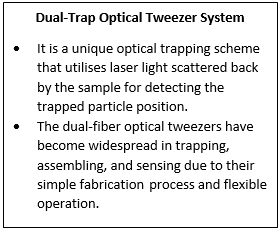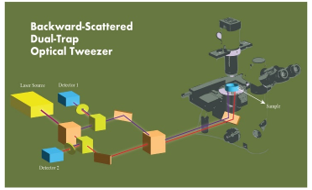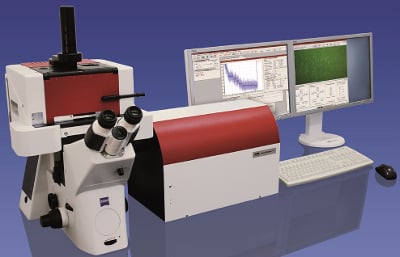SYLLABUS
GS-3: Achievements of Indians in science & technology; indigenization of technology and developing new technology.
Context:
Researchers at the Raman Research Institute (RRI) have developed a novel dual-trap optical tweezers system to boost research in biology, medicine, and nanoscience.
More on the News

- Optical tweezers, awarded the 2018 Nobel Prize in Physics, are used to trap and manipulate microscopic particles.
- Advanced dual-trap optical tweezers offer a more precise and versatile tool for manipulating single biomolecules and small particles.
- This innovation by Indian researchers makes optical tweezer technology more accessible and versatile, enabling precise biological and medical research.
- The team introduced a confocal detection scheme, where each detector monitors only the light scattered back from its own trap, eliminating interference.
Key Features of the New Design

- Eliminates cross-talk and interference, allowing independent and accurate measurements without the need for separate lasers or complex optics.
- Stable alignment and long-duration performance, maintaining precision even when traps are moved or under changing temperatures.
- Compatible with advanced imaging techniques like fluorescence and phase contrast without requiring modifications.
- Compact and modular design can be easily integrated into standard microscopes.
Advantages over Traditional Systems
- Conventional systems suffer from interference and require complex realignment; the RRI system maintains alignment and accuracy even during trap movement.
- Unlike older designs, it does not disrupt microscope components, improving versatility.
- Provides a cost-effective solution, reducing downtime and setup complexity.
Applications and Future Prospects
- Enables high-precision force measurement studies of biomolecules.
- Useful for probing soft materials and biological samples with greater accuracy.
- Supports micromanipulation of cells and biomolecules for advanced biomedical and drug development research.
- Makes advanced tools more accessible to Indian scientists, strengthening research in neuroscience, nanoscience, and biotechnology.
- Has strong potential for patent protection and commercialization as a plug-and-play module for commercial microscopes.


